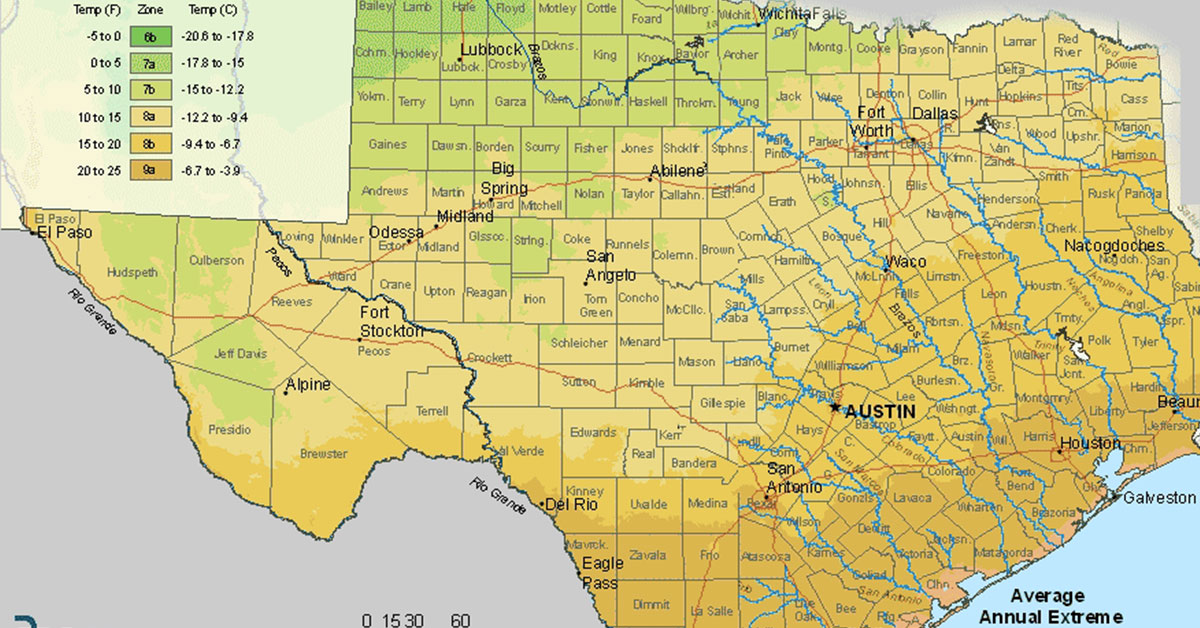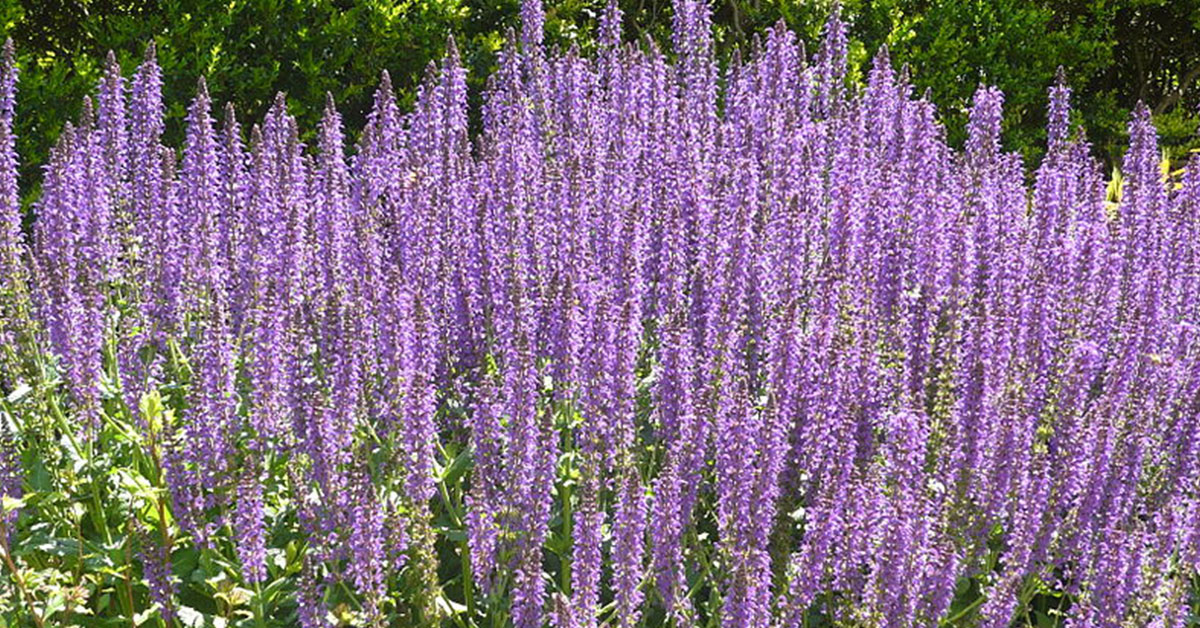Welcome to the vibrant world of gardening in Austin, Texas! Nestled in the heart of the Lone Star State, Austin offers a unique and diverse gardening experience. One key factor that plays a crucial role in successful gardening here is understanding the USDA hardiness zone. Austin falls within the USDA hardiness zone 8b, which means it experiences mild winters with occasional frosts and hot, dry summers.
This zone classification serves as a valuable guide for selecting plants that can thrive in our region’s specific climate conditions. Whether you’re a seasoned gardener or just starting out, this article will provide you with essential information and tips to help you create a flourishing garden in Austin’s unique hardiness zone.
What is Austin’s USDA hardiness zone?
The USDA hardiness zone is a system developed by the United States Department of Agriculture (USDA) to categorize and identify the suitable growing conditions for different plants across the United States. The zone map is divided into 13 zones, each representing a 10°F difference in average annual minimum temperature. Austin, Texas falls within USDA hardiness zone 8b.
This means that the average annual minimum temperature in Austin ranges from 15°F to 20°F (-9°C to -6.7°C). This information is crucial for gardeners and plant enthusiasts as it helps determine which plants are most likely to thrive in a specific region. In Austin’s zone 8b, gardeners can expect mild winters with occasional frosts and freezes.
The growing season typically lasts from late February to early December, providing ample time for a variety of plants to flourish. However, it is important to note that extreme temperature fluctuations can occur, with occasional cold snaps and heatwaves. When selecting plants for a garden in Austin’s hardiness zone, it is essential to choose those that are well-suited to the local climate. Native plants are often the best choice as they have adapted to the local conditions over time.
Some popular native plants for Austin include Texas sage (Leucophyllum frutescens), Mexican feather grass (Nassella tenuissima), and blackfoot daisy (Melampodium leucanthum). In addition to native plants, there are many non-native plants that can thrive in Austin’s zone 8b. However, it is important to consider factors such as soil type, sun exposure, and water requirements when selecting non-native species. Some common non-native plants that are well-suited to Austin’s climate include lantana (Lantana camara), rosemary (Rosmarinus officinalis), and esperanza (Tecoma stans).
To ensure the success of plants in Austin’s hardiness zone, it is important to provide proper care and maintenance. This includes regular watering, appropriate fertilization, and protection from extreme weather conditions. Mulching can also help conserve moisture and regulate soil temperature.
Overall, understanding the USDA hardiness zone in Austin is essential for selecting the right plants and ensuring their successful growth. By choosing plants that are well-adapted to the local climate and providing proper care, gardeners can create beautiful and thriving gardens in this region.
When can you plant your garden in Austin?
In Austin, the ideal planting times for various plants can be determined by considering its USDA hardiness zone, which is Zone 8b. This zone indicates the average minimum winter temperature range of 15 to 20 degrees Fahrenheit (-9 to -6 degrees Celsius). Here are the general guidelines for planting in Austin based on the USDA hardiness zone:
- Spring Planting: In Zone 8b, the last frost date typically occurs around mid-March to early April. Therefore, it is ideal to start planting warm-season crops and annual flowers after the last frost date. This includes vegetables like tomatoes, peppers, cucumbers, beans, and herbs such as basil, oregano, and thyme. It is also a good time to plant annual flowers like marigolds, zinnias, and petunias.
- Fall Planting: Austin’s mild winters allow for a longer growing season, making fall an excellent time for planting. In Zone 8b, the first frost date usually occurs around mid-November to early December. Therefore, you can start planting cool-season crops in late summer or early fall, around August to September. This includes vegetables like lettuce, spinach, kale, carrots, radishes, and broccoli. It is also a good time to plant perennial flowers, shrubs, and trees.
- Winter Planting: While winter is generally a dormant period for many plants, there are still some cool-season vegetables that can be planted in Austin during this time. Plants such as onions, garlic, and some leafy greens like Swiss chard and collard greens can be planted in late fall or early winter, around November to December.
It is important to note that these planting times are general guidelines, and it’s always a good idea to check the specific planting recommendations for each plant variety. Additionally, factors like microclimates, soil conditions, and individual plant preferences should also be considered when determining the ideal planting times in Austin.
What grows well in Austin?
Austin, Texas falls under USDA hardiness zone 8b, which means it experiences mild winters with occasional freezing temperatures. Here is a comprehensive list of plants that generally grow well in Austin’s climate:
Native Texas Plants:
- Texas Sage (Leucophyllum spp.)
- Blackfoot Daisy (Melampodium leucanthum)
- Mexican Feathergrass (Nassella tenuissima)
- Gregg’s Mistflower (Conoclinium greggii)
- Purple Coneflower (Echinacea purpurea)
- Mexican Honeysuckle (Justicia spicigera)
- Flame Acanthus (Anisacanthus quadrifidus var. wrightii)
- Rock Rose (Pavonia lasiopetala)
- Texas Lantana (Lantana urticoides)
- Mexican Mint Marigold (Tagetes lucida)
Ornamental Grasses:
- Gulf Muhly (Muhlenbergia capillaris)
- Mexican Feathergrass (Nassella tenuissima)
- Lindheimer’s Muhly (Muhlenbergia lindheimeri)
- Bamboo Muhly (Muhlenbergia dumosa)
- Big Muhly (Muhlenbergia lindheimeri)
Perennials:
- Black-eyed Susan (Rudbeckia hirta)
- Salvia (Salvia spp.)
- Coreopsis (Coreopsis spp.)
- Yarrow (Achillea spp.)
- Liatris (Liatris spp.)
- Penstemon (Penstemon spp.)
- Coneflower (Echinacea spp.)
- Daylily (Hemerocallis spp.)
- Mexican Hat (Ratibida columnifera)
- Autumn Sage (Salvia greggii)
Shrubs:
- Yaupon Holly (Ilex vomitoria)
- Dwarf Burford Holly (Ilex cornuta ‘Burfordii Nana’)
- Rosemary (Rosmarinus officinalis)
- Texas Mountain Laurel (Sophora secundiflora)
- Agarita (Mahonia trifoliolata)
- Cenizo (Leucophyllum frutescens)
- Anacacho Orchid (Bauhinia lunarioides)
- Flame Acanthus (Anisacanthus quadrifidus var. wrightii)
- Esperanza (Tecoma stans)
- Texas Sage (Leucophyllum spp.)
Trees:
- Live Oak (Quercus virginiana)
- Texas Red Oak (Quercus buckleyi)
- Cedar Elm (Ulmus crassifolia)
- Mexican Sycamore (Platanus mexicana)
- Texas Ash (Fraxinus texensis)
- Texas Persimmon (Diospyros texana)
- Texas Mountain Laurel (Sophora secundiflora)
- Mexican Plum (Prunus mexicana)
- Desert Willow (Chilopsis linearis)
- Texas Ebony (Ebenopsis ebano)
Remember to consider factors like soil type, sun exposure, and water requirements when selecting plants for your specific garden.
What won’t grow in Austin?
In Austin, which falls under USDA hardiness zone 8b, there are certain plants that may struggle to thrive due to the region’s climate and growing conditions. Here are some examples:
- Blueberries (Vaccinium spp.): Blueberries require acidic soil, which is not typically found in Austin’s alkaline soil. They also prefer cooler temperatures and may struggle with the heat.
- Rhododendrons (Rhododendron spp.): Rhododendrons prefer cooler, more humid climates and may struggle with the hot and dry conditions in Austin.
- Lilacs (Syringa spp.): Lilacs require a period of winter chill to bloom properly, which may not be consistently met in Austin’s milder winters.
- Hydrangeas (Hydrangea spp.): Certain varieties of hydrangeas, such as the bigleaf hydrangea (Hydrangea macrophylla), may struggle with the heat and require extra care to maintain moisture levels.
- Peonies (Paeonia spp.): Peonies prefer colder climates and may not receive enough winter chill in Austin to thrive.
- Tulips (Tulipa spp.): Tulips require a period of cold dormancy, which may not be consistently met in Austin’s milder winters.
- Delphiniums (Delphinium spp.): Delphiniums prefer cooler temperatures and may struggle with the heat and humidity in Austin.
- Ferns (various genera): Many fern varieties prefer more shaded and humid environments, which may be challenging to provide in Austin’s hot and dry conditions.
It’s important to note that while these plants may struggle in Austin, it doesn’t mean they are impossible to grow. With proper care, soil amendments, and microclimates, it may be possible to cultivate these plants successfully.













